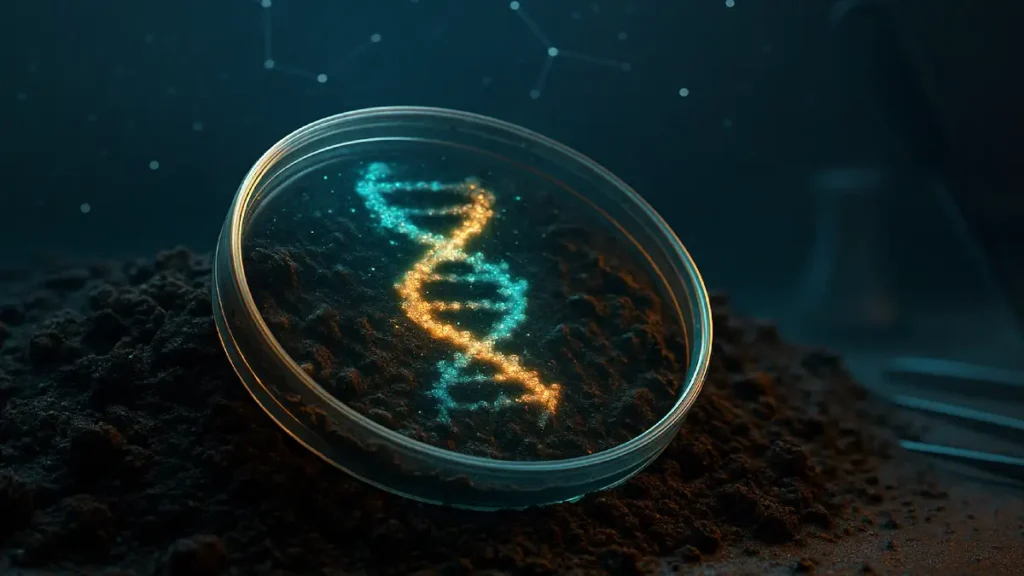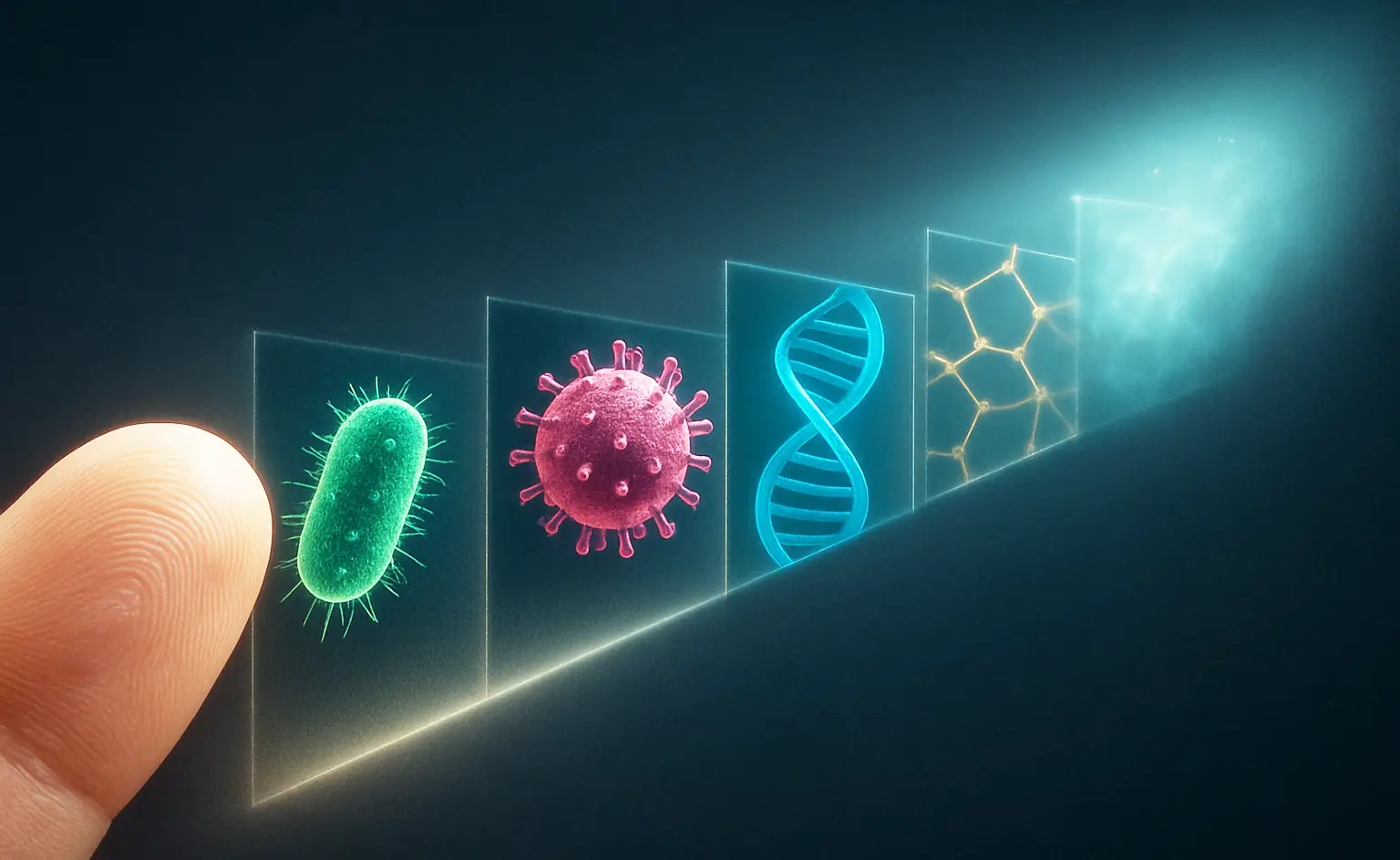Antibiotic discovery is quietly undergoing a systems-level reboot: by bypassing the need to culture microbes, mining giant DNA fragments from environments like forests and oceans, and pairing that with AI-assisted molecule triage, researchers are converting the once-invisible “microbial dark matter” into tangible drug leads with novel mechanisms of action. The payoff is no longer theoretical—recent efforts have produced hundreds of previously unknown bacterial genomes from a single soil sample and unveiled antibiotic candidates that strike hard-to-hit targets, while AI screens now surface nearly a million antimicrobial peptides to fast-track lab validation. This is what a new supply chain for antibiotics looks like, built for an era of resistance.

What Is Microbial Dark Matter?
- “Microbial dark matter” refers to the vast majority of microbes that can’t be grown with standard lab techniques, historically cutting drug discovery off from most of nature’s chemical playbook.
- New methods extract and assemble large DNA fragments directly from environments, reconstructing complete genomes from previously inaccessible organisms whose biosynthetic gene clusters (BGCs) encode unknown natural products.
- The practical shift: instead of “grow and screen,” the field is moving to “sequence, assemble, predict, express”—a digital-to-chemical pipeline that scales with data and computation.
The New Discovery Pipeline
Environmental Long-Read Metagenomics
- Teams are generating terabase-scale sequence directly from soil and other microbiomes, assembling hundreds of complete genomes and surfacing BGCs that encode uncharacterized antibiotics.
- Long-read assemblies improve contiguity, revealing full gene clusters and regulatory elements that short reads often fragment.
Genome Mining and Target Novelty
- Candidate molecules from these hidden genomes are increasingly unusual—some disrupt bacterial membranes through rare lipid interactions or hit ATP-dependent proteases like ClpX, avoiding crowded targets.
- Prioritization emphasizes structural novelty and resistance-evasion features to reduce rediscovery.
AI Triage for Peptides and Small Molecules
- Machine learning platforms scan tens of thousands of genomes and metagenomes to surface hundreds of thousands of antimicrobial peptide (AMP) candidates, then down-select to synthesis-ready shortlists.
- Early in vitro testing compresses the cycle from years to weeks by focusing on high-confidence predictions.
Key Breakthroughs Worth Watching
Leads from Deep-Soil Genome Mining
- Two standout leads illustrate orthogonal mechanisms: one perturbs cardiolipin-rich membranes, and another targets the ClpX unfoldase, a rare antibacterial target.
- These mechanisms aim to raise barriers to rapid resistance compared with single, well-worn targets.
Unculturable-to-Curable: The iChip Lineage
- Clovibactin, derived from previously unculturable bacteria enabled by the iChip, binds three distinct peptidoglycan precursors, effectively “caging” cell-wall building blocks.
- Multi-target binding can slow resistance development by requiring multiple simultaneous mutations.
AI-Led Peptide Discovery at Scale
- Global microbiome mining now reports near–million-scale AMP candidates, with early hits against MDR E. coli and S. aureus.
- Initial animal model efficacy suggests the funnel is translating beyond in vitro.
How the Ecosystem Fits Together
Sample to Sequence
- Field sampling from soils, sediments, and host-associated niches feeds long-read sequencing and assembly to produce high-contiguity genomes.
- Improved assemblies reveal cryptic and silent BGCs that encode novel scaffolds.
In Silico Prioritization
- Bioinformatics ranks BGCs by novelty, predicted scaffold, and resistance-evading features; AI shortlists peptide and small-molecule candidates.
- Cross-referencing dereplication databases minimizes time wasted on known chemotypes.
Expression and Activation
- Synthetic biology ports BGCs into tractable hosts; promoter refactoring and pathway balancing overcome silence.
- Co-culture and microfluidics recreate ecological cues that awaken “silent” gene clusters.
Rapid Phenotyping and Triage
- High-throughput microfluidics, automated imaging, and time-kill assays quantify bactericidal dynamics and cytotoxicity.
- Early combinatorial screens probe synergy and efflux susceptibility to guide medicinal chemistry.
Preclinical Translation
- Mechanistic assays identify multi-target or uncommon targets; PK/PD optimization and resistance mapping inform go/no-go decisions.
- Animal infection models validate efficacy before IND-enabling studies.
Why This Could Bend the Resistance Curve
- Mechanistic novelty: multi-target binders and rare targets reduce single-step resistance; membrane and cardiolipin perturbation challenge classical resistance pathways.
- Diversity at scale: moving beyond the ~1% culturable fraction expands chemical space and lowers rediscovery rates.
- Throughput compression: metagenomics, AI triage, and microfluidic validation running in parallel increase shots on goal and shorten timelines.
Bottlenecks and Failure Points
The Expression Gap
- Many BGCs remain silent off their native chassis; expression often requires tailored promoters and regulatory rewiring.
- Host choice, cofactor availability, and precursor supply can be limiting.
Dereplication and Structural Prediction
- Avoiding re-finding known scaffolds depends on robust MS and structure prediction; errors waste synthesis capacity.
- Confident novelty calls need integrated spectral libraries and genome context.
ADMET Realities
- Novel mechanisms still face toxicity, serum binding, and clearance pitfalls.
- Early PK/PD and safety margins are essential to avoid late-stage attrition.
Economics and Stewardship
- Even successful candidates face commercialization hurdles and stewardship constraints.
- Pull incentives and subscription models are crucial to sustain pipelines.
Second-Order Impacts
- Environmental microbiome mapping becomes a strategic asset, turning “antibiotic prospecting” into a data competition.
- Platform spillovers extend to antivirals, antifungals, and immunomodulators.
- Diagnostic synergy: mechanism-diverse agents paired with rapid resistance-aware prescribing may prolong clinical lifetimes.
What Changes for Practitioners Now
- Integrate long-read metagenomics early and invest in heterologous expression and coculture microfluidics.
- Design portfolios for mechanism orthogonality, multi-target profiles, and efflux awareness.
- Build partnerships with environmental genomics consortia and AI groups; leverage non-dilutive AMR funding.
What to Watch Next
- First-in-class candidates targeting cardiolipin or ClpX progressing into IND-enabling studies with clean PK and safety.
- Open AMP repositories becoming standard pre-competitive resources.
- Regulatory pathways adapting for platform-derived families to enable class-level evidence.




